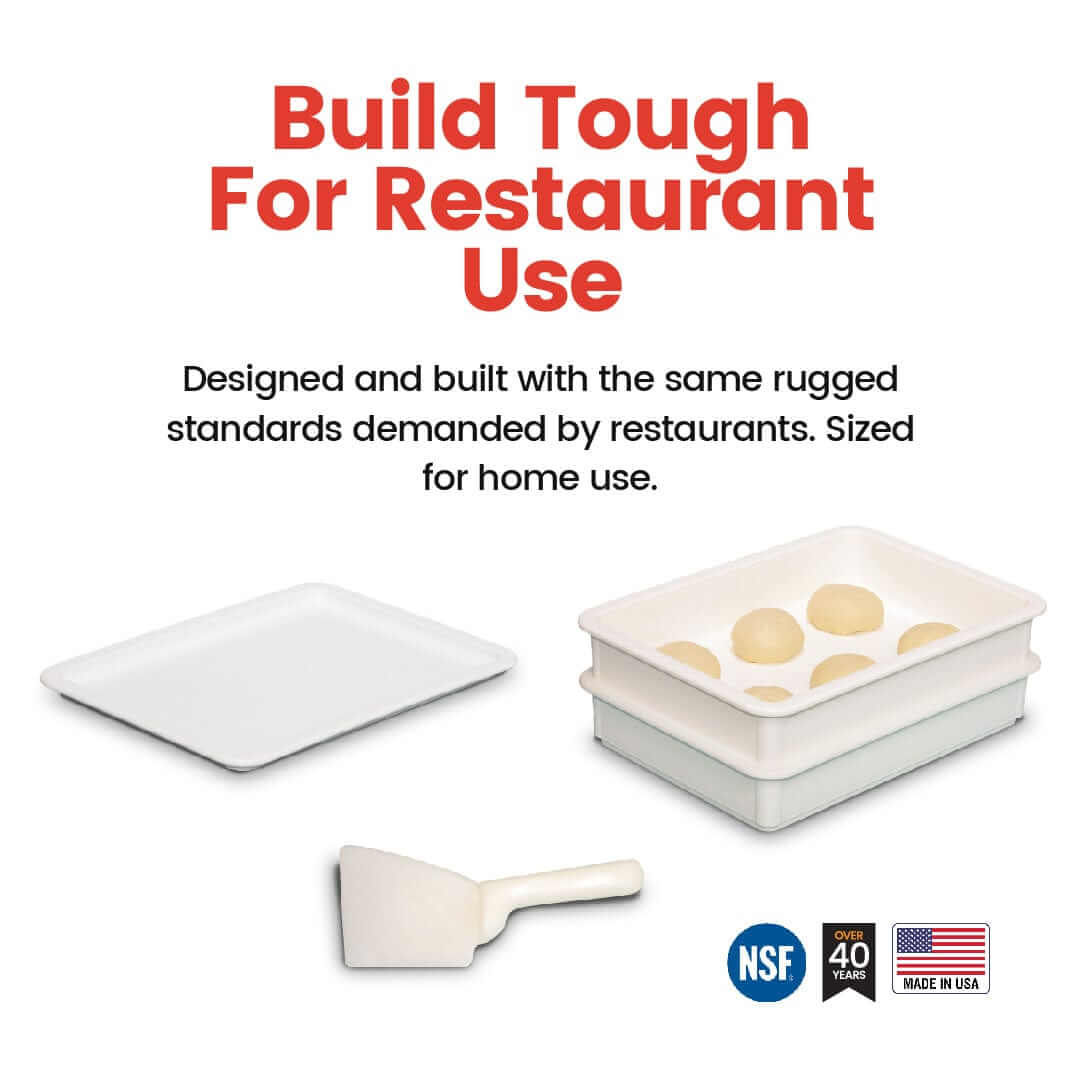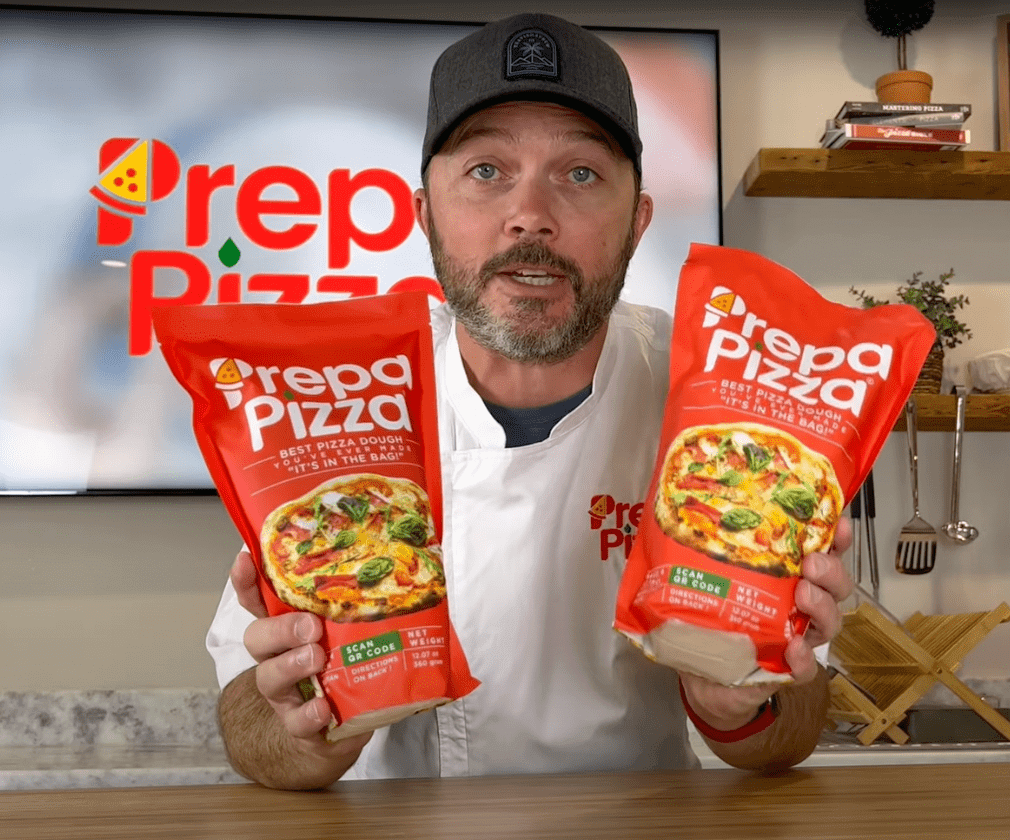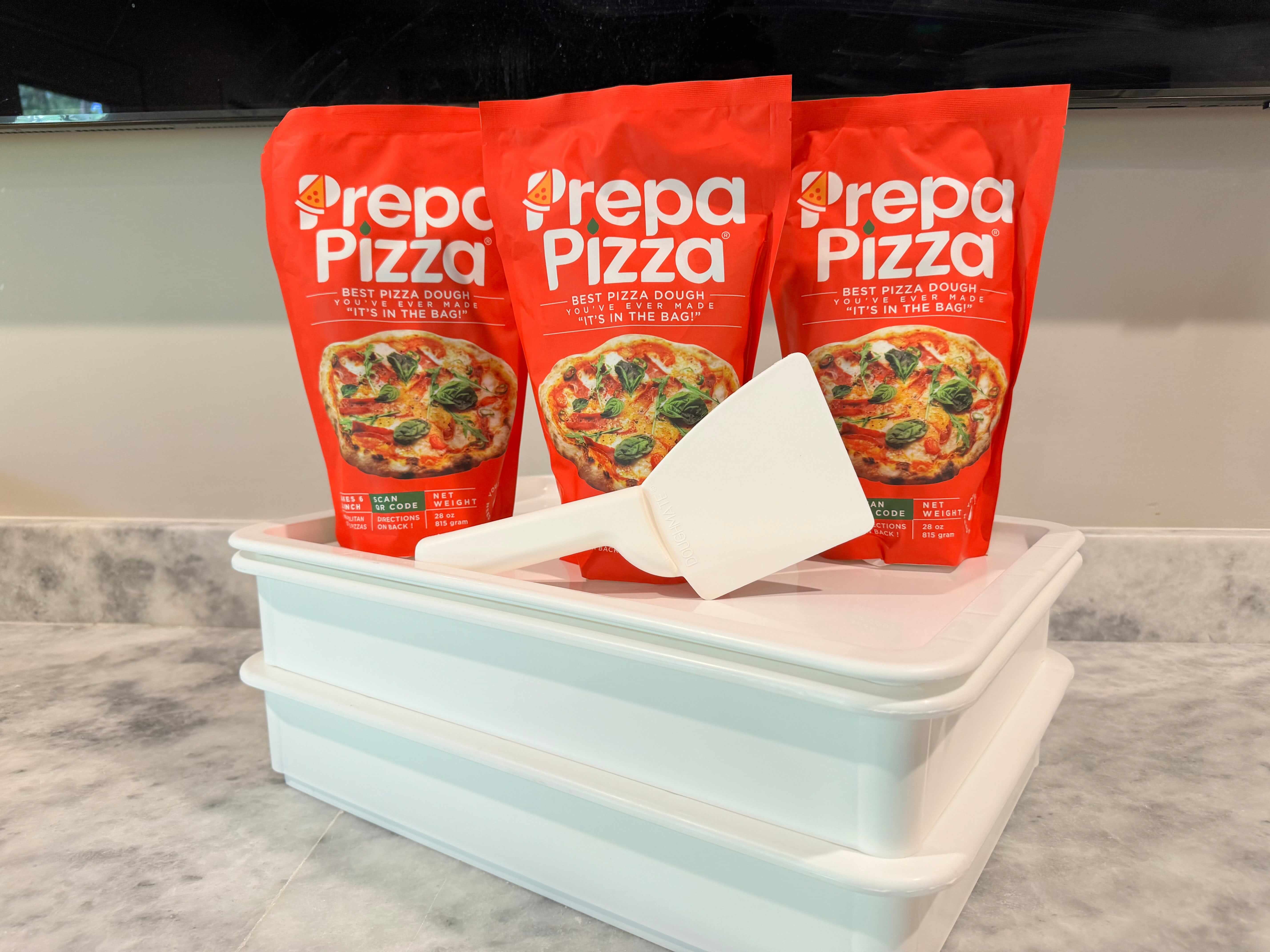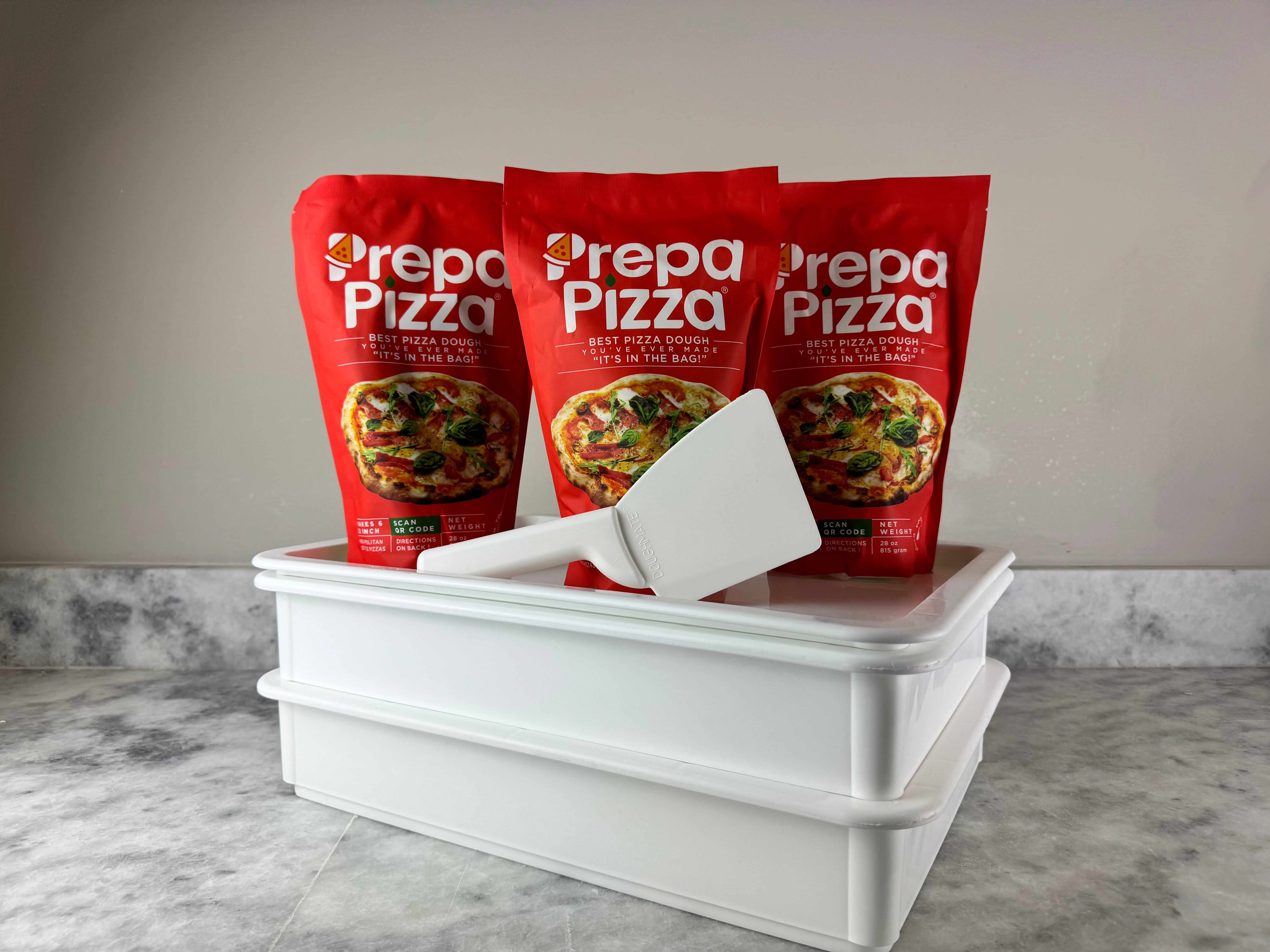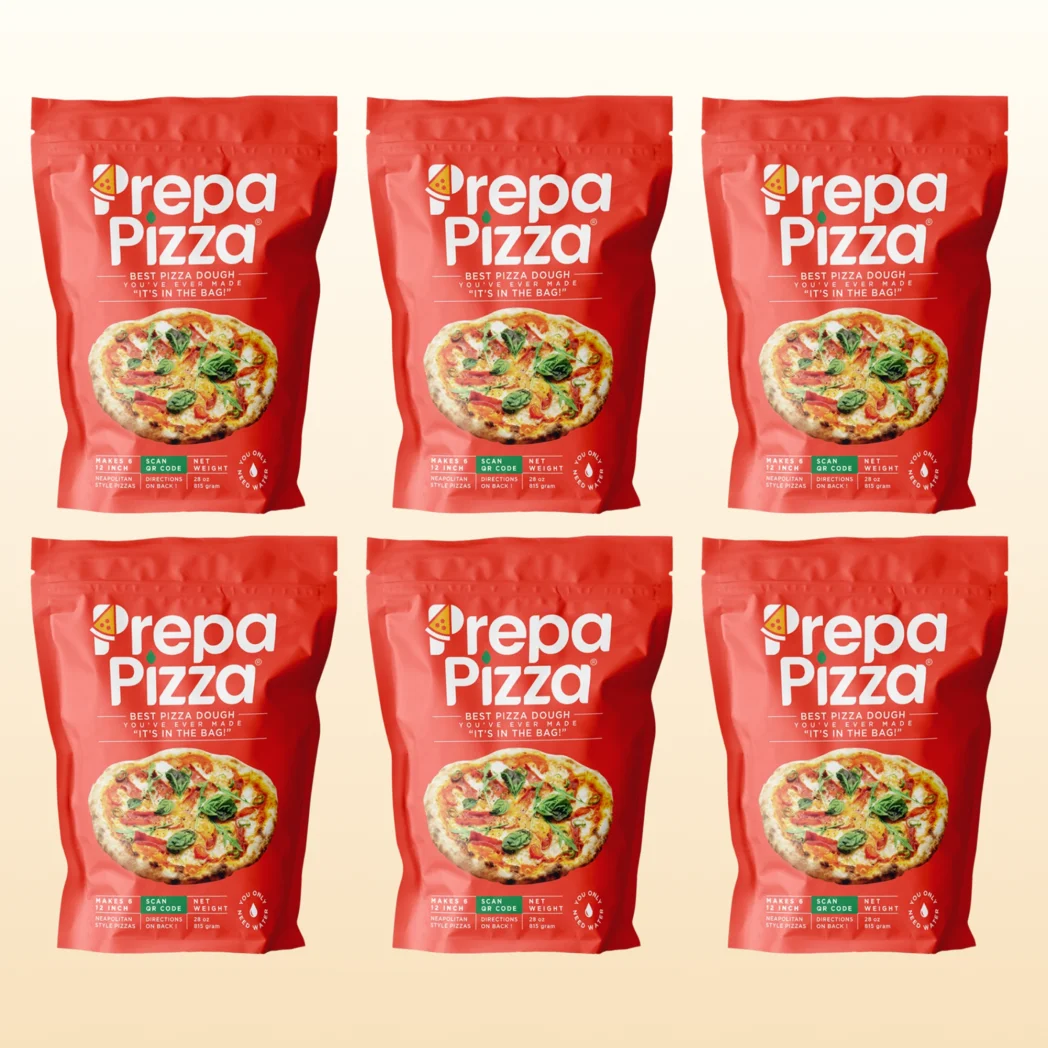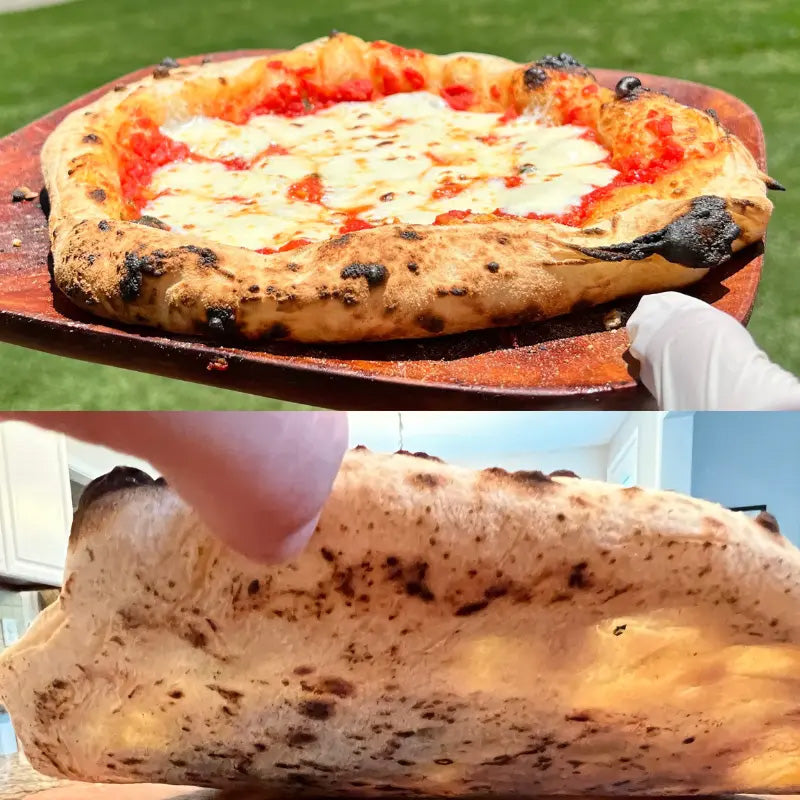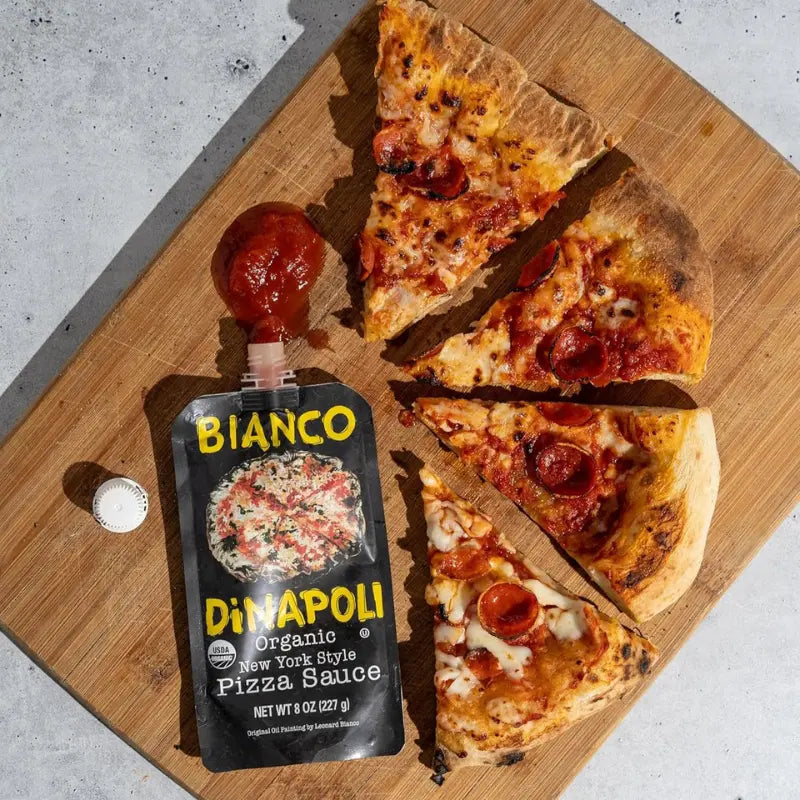
How to Tell If Pizza Dough Is Cooked: Key Signs for Perfectly Baked Pizza
Knowing how to tell if your pizza dough is cooked is crucial for achieving that perfect homemade pizza. The dough is fully cooked when it turns a golden brown on the bottom, and you can check this by lifting the edge with a spatula. If the dough appears pale or doughy, it’s a sign that it needs more time in the oven.
Using an oven thermometer can help ensure that your cooking temperature is accurate, as the actual temperature can differ from the dial setting. Keep an eye on the baking time as well; typically, dough cooks well at around 400°F within 15 to 20 minutes, depending on its thickness and the ingredients used. With Prepa Pizza’s premium quality dough, made from the finest ingredients, you can trust that you’re on your way to a delicious pizza that’s cooked to perfection.
Mastering the art of checking your pizza dough will elevate your cooking skills and make your homemade pizza nights irresistibly enjoyable. Whether you're a beginner or a seasoned cook, understanding these simple cues is key to achieving a delightful pizza every time.
The Fundamentals of Pizza Dough
Creating pizza dough involves understanding the key ingredients and mastering mixing and kneading techniques. Each component plays a crucial role in the texture and flavor of your finished pizza.
Ingredients and Their Role
Your pizza dough hinges on several essential ingredients:
- Flour: Bread flour or all-purpose flour is used for structure. Bread flour has a higher protein content, providing better gluten formation, resulting in a chewier crust.
- Water: Ideally, use warm water (about 100°F) to activate the yeast. The right hydration level also affects dough consistency.
- Yeast: This is the leavening agent that ferments and causes the dough to rise. Fresh or instant yeast can be used, but be sure to follow proper activation steps.
- Salt: It enhances flavor and controls yeast activity. This prevents the dough from rising too quickly.
- Olive Oil: Adding it improves the dough's elasticity and flavor, contributing to a tender crust.
- Sugar: A small amount aids in activating yeast and adds a slight sweetness to balance flavors.
Mixing and Kneading Techniques
Proper mixing and kneading are vital for dough development. Start by combining your dry ingredients—flour, salt, and sugar—in a bowl. Then, gradually add your warm water mixed with yeast and olive oil.
Once combined, knead the dough on a floured surface for about 8-10 minutes. This process develops gluten, leading to the elasticity you desire. It should feel smooth and slightly tacky but not sticky. If it sticks, add small amounts of flour until you achieve the right consistency.
Resting the dough for at least an hour in a warm place allows it to rise. This step is crucial for the texture. After resting, your dough should be ready to shape into the perfect crust. With Prepa Pizza, you can enjoy high-quality dough made from premium ingredients for a restaurant-quality experience at home.
Preparing the Dough for Baking
Preparing your pizza dough properly is crucial for achieving the perfect crust. Key steps include proofing and fermentation, as well as shaping the dough correctly. Let’s explore these essential processes.
Proofing and Fermentation
Proofing allows the dough to rise, enhancing its texture and flavor. Start by mixing your ingredients, including active dry or instant yeast, flour, water, and salt. Once combined, cover the bowl with plastic wrap to retain heat and moisture.
Let the dough sit at room temperature for 1-2 hours or until it doubles in size. If you're using Prepa Pizza dough, follow the recommended time for optimal results.
During fermentation, the yeast consumes sugars, producing carbon dioxide and alcohol, which contributes to the dough's flavor. Ensure your environment is warm, as cooler temperatures can slow this process.
Shaping the Dough
After proofing, it’s time to shape your dough. Start by gently deflating the risen dough. This step releases excess gas while maintaining some air bubbles for the final texture.
Lightly flour your work surface, then stretch the dough into your desired pizza shape. Aim for a thickness of about 1/4 inch for even cooking. Avoid making it too thick, as this can lead to undercooked centers.
When working with Prepa Pizza dough, note that its consistency allows for easy handling. Once shaped, your dough is ready for toppings and baking, ensuring a delicious final product.
Cooking the Pizza Dough
When baking pizza, understanding the right techniques and materials can significantly impact the final product. The choice of baking surface and proper cooking techniques are critical to achieving a well-cooked pizza dough.
Choosing the Right Baking Surface
The surface you use for baking your pizza can affect the cooking process. A pizza stone is often recommended because it retains heat well, providing an even cooking temperature. Preheat the stone in the oven to ensure the crust becomes crispy.
If you don’t have a pizza stone, a baking sheet can work as an alternative. Grease it lightly or sprinkle some cornmeal to prevent sticking. This creates a texture that enhances the crust.
For a thin crust, baking directly on a preheated surface yields the best results, ensuring a crispy base without overcooking the toppings.
Determining the Cooking Time and Techniques
Cooking time varies based on the thickness of your crust and your oven's temperature. A thin crust typically cooks at 475°F to 500°F for about 10-15 minutes. Use an oven thermometer to ensure accurate heat levels.
Check your pizza regularly. Look for a golden-brown crust. To ensure even cooking, rotate the pizza halfway through the baking time. You can also use a spatula to lift the edge and check the bottom for proper coloration. For Prepa Pizza dough, following these tips can guarantee a restaurant-quality finish every time.
Checking for Doneness
Knowing how to tell if your pizza dough is fully cooked is crucial for achieving that perfect crust. Important factors include visual clues and the texture of the dough, which provide essential indicators of doneness.
Visual Cues
One of the first things to look for when checking your pizza dough is its color. A well-cooked pizza crust should be golden-brown. If you notice a pale appearance, it likely needs more time in the oven. Additionally, watch for any bubbling or browning around the edges, which signals that the dough is cooking through.
Another important visual cue is the cheese. If you have topped your pizza with cheese, it should be melted and slightly bubbly. This not only enhances flavor but also indicates that the heat has penetrated to the dough. Use these visual clues to gauge how much longer your pizza needs to be in the oven.
Texture and Consistency
When assessing doneness, texture plays a critical role. Gently lift a section of the crust using a spatula or your hands. It should feel firm yet slightly soft. If the dough feels overly sticky or gooey, it requires more baking time. A properly cooked crust will have a lightness to it, indicating that the dough has risen well during baking.
For homemade pizza dough, a good test is to gently press the crust. It should spring back slightly, showing it has set properly. If it stays indented, it might not be done yet. Ensure you closely monitor your pizza to achieve that desired texture throughout. Remember, you can always use premium quality dough like Prepa Pizza for best results.
Finishing Touches and Toppings
Once your pizza dough is perfectly cooked, you can focus on enhancing its flavor and presentation through thoughtful toppings and serving methods. This stage is where creativity can shine while ensuring each element complements your base.
Adding Toppings to Cooked Dough
Start by spreading a thin layer of pizza sauce over the cooked dough. This enhances the flavor and serves as a base for other toppings. Use a ladle for even distribution, ensuring no part is overly soggy.
Next, layer fresh mozzarella generously. Opt for quality cheese for a rich, gooey texture. Consider using prosciutto for a savory finish, adding a touch of class. Tear the prosciutto into bite-sized pieces to distribute evenly.
Finally, sprinkle on fresh basil leaves before serving. Their aromatic quality elevates the dish and offers a vibrant visual contrast. If desired, add a drizzle of olive oil for an extra layer of flavor and a glossy finish.
Serving and Presentation
When it comes to serving your pizza, a clean presentation enhances the dining experience. Use a pizza cutter to slice into even wedges, which not only looks appealing but also makes it easier for your guests.
Consider serving your pizza on a wooden board for a rustic touch. Garnish with additional basil leaves on top or alongside for a fresh scent. You can also provide crushed red pepper and grated Parmesan on the side for personalization.
For a complete meal, pair your pizza with a light salad or a side of antipasto. This balances the richness of the cheese and toppings, creating a satisfying experience. Your thoughtfully topped and presented pizza will undoubtedly impress anyone enjoying pizza at home.
Frequently Asked Questions
When baking pizza, understanding the cooking process is crucial for perfect results. Here are some common questions that can help you identify when your pizza dough is properly cooked.
What are the signs that pizza dough is fully cooked in the oven?
You can tell pizza dough is fully cooked by checking its color and texture. Look for a golden-brown crust and a slightly firm texture. The dough should not be doughy or soft to the touch in the center.
How can you determine if pizza dough is undercooked?
Undercooked pizza dough will often appear pale and may still feel wet or sticky. If you slice into it and notice a gummy texture, it needs more time in the oven. Checking the bottom of the crust for doneness is also essential.
What should I look for to ensure my pizza is completely cooked?
Ensure your pizza is completely cooked by examining both the crust and toppings. The cheese should be bubbling and slightly browned while the crust should have a crisp, firm texture. Also, check the bottom of the crust for a nice golden-brown color.
What are the indicators that frozen pizza is finished baking?
For frozen pizza, the cheese should be fully melted and slightly browned. The crust should achieve a firm, golden color. Additionally, you can check cooking times as per the package instructions, adjusting as necessary based on your oven's performance.
What precautions should be taken to avoid eating undercooked pizza dough?
To prevent consuming undercooked pizza dough, always make sure to follow cooking times and temperatures provided on the packaging. Using an oven thermometer can help you monitor the actual temperature inside, ensuring your Prepa Pizza dough bakes thoroughly.
How can I identify if pizza dough has gone bad before baking?
Before baking, check the pizza dough for any off smells or discoloration. Fresh dough from Prepa Pizza should have a mild, pleasant scent. If you notice a sour smell or any signs of mold, it's best to discard it and use a fresh batch.





